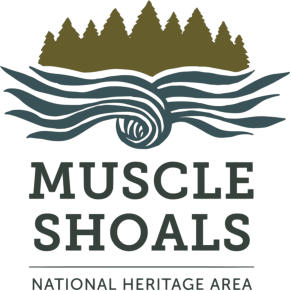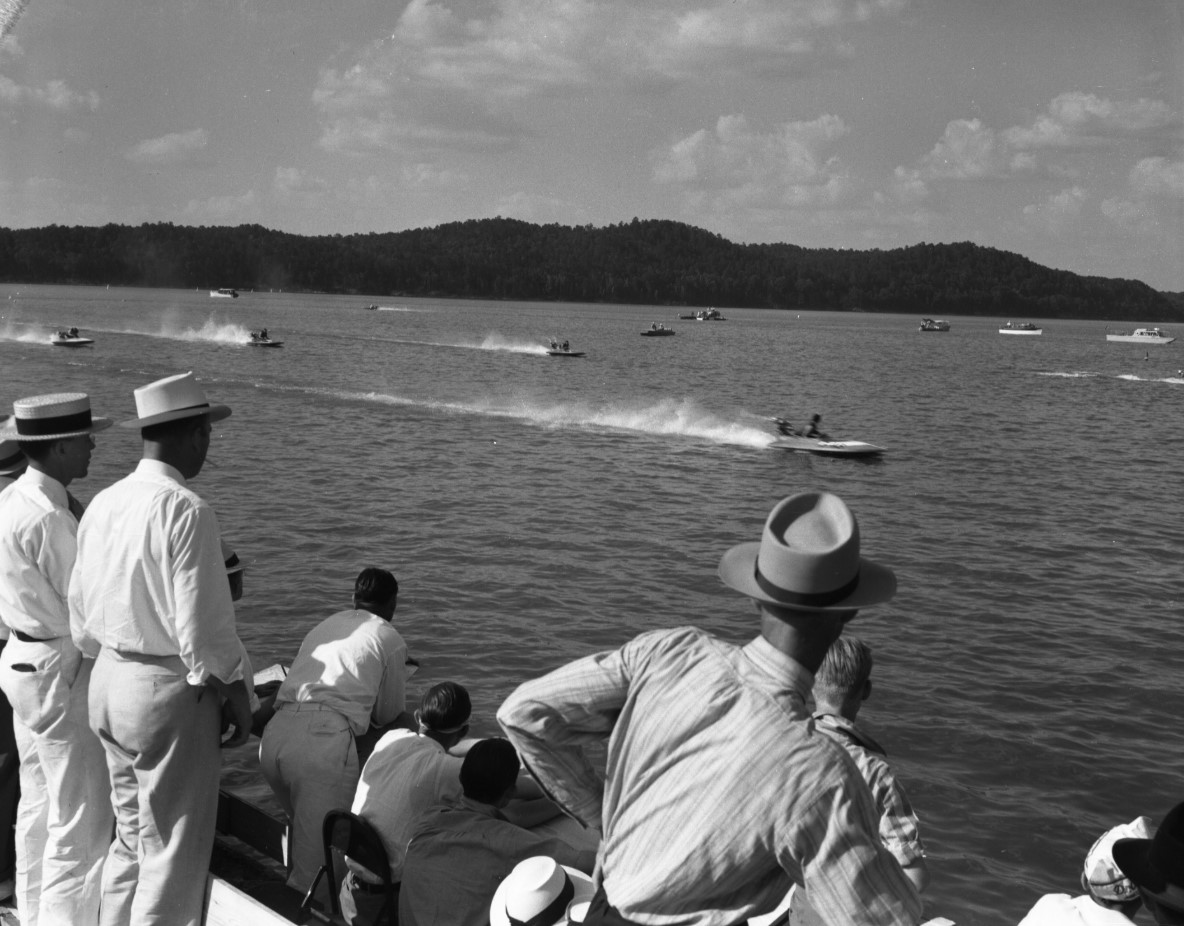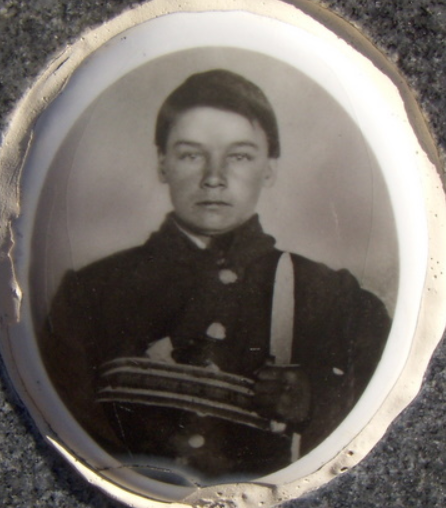By Carolyn M. Barske Crawford
Muscle Shoals National Heritage Area/The University of North Alabama
“We really didn’t talk about the chestnut very much. The chestnut was always there and we never thought it would not be a part of our lives…I can recall picking up chestnuts with my father on the Black Moshannon State Park in Pennsylvania during the 1930s. Collecting nuts was a typical Sunday outing and we would literally collect gallons of chestnuts. We would roast and eat the nuts, they were a real treat.” — Bryan Burhans, “Who Will Remember the Chestnut,” The Journal of the American Chestnut Foundation 25, No. 5 (September-October, 2011)
The Most Useful Tree
At one time, more than four billion American chestnut trees spread from southern Canada all the way to Mississippi and Alabama. This giant of the eastern woodlands was hard to miss. It could stand over one hundred feet tall, the trunks straight and true. To the people of the eastern United States, especially of Appalachia, the tree was invaluable. It provided food for people & animals and wood for cabins & fence posts. In cash-poor regions, the tree could even put some money in people’s pockets when they sold nuts to brokers to take to the cities of the northeast. Some joked that the tree could take you from the cradle to the grave, as the wood was used to make both furniture for babies and caskets for those who died. It was certainly “the most useful tree.” Today while millions of American chestnut sprouts remain in the forests of the east, almost all the large trees, as well as most of the people who remembered the trees’ dominant place in the forest ecosystem, are gone.
Ravaged by blight in the first half of the 12th century, American chestnut’s demise created enormous holes in eastern forests that have long since been filled by other trees. But there is still hope for the American chestnut. People have been working hard for many years to save it, with some dedicating much of their life’s work to bringing the chestnut tree back. Orchards across the eastern United States are filled with American & Chinese chestnut hybrids as scientists and volunteers backcross breed different lines of the chestnut family together, seeking a blight-resistant tree to return to the forest. And beginning in the 1990s, scientists have worked in labs to modify the genes that makes the tree susceptible to blight, hoping to use biotechnology to help solve the problem of the American chestnut.
The story of the American chestnut has been told in many ways and on many pages over the years. The chestnut appears in Native Americans myths & legends, as well as in works about the medicinal uses of the tree. Scientific articles document the spread of the fungus and the demise of the tree – and today talk about its renewal. Poets have written of its spreading branches, straight trunks & lofty heights as well as the blight that brought it low. Journalists have told the story from many angles – including Susan Freinkel, whose “American Chestnut: The Life, Death, and Rebirth of a Perfect Tree” (2007) helps readers understand the tree and its place in American society. Henry David Thoreau wrote of them in “Faith in a Seed: The Dispersion of Seeds and Other Late Natural History Writings” (1996). The tree also makes appearances in fiction. I recently came across it in Richard Power’s “The Overstory” (2019), in which a healthy American chestnut tree stands as a symbol of growth & prosperity and, once infected with the blight, also as symbol of the decline & fall of a family. Environmental advocates & historians, including Donald Davies & Ralph Lutts, and many amateur historians, including William Lord, have also documented the history of the tree, but there is still much to examine, including the role memory, narrative & stories play in the past, present & future of the American chestnut.
Founded in 1983, The American Chestnut Foundation has taken the lead in chestnut restoration efforts. The establishment of Meadowview Farm in 1989 and other research orchards in subsequent years has allowed TACF to develop a sustained breeding program. While people tried to solve the problem of the blight before the formation of TACF, no one institution supported the research long-term, and progress halted when the researchers passed away or lost interest in the problem. With the restoration of the chestnut as the organization’s core mission, TACF provides the continuity and resources necessary to find a real solution; the organization continues the restoration effort even when scientists retire or change focus. TACF began documenting its progress in 1985 with the publication of The Journal of the American Chestnut Foundation, known since 2015 as Chestnut: The New Journal of the American Chestnut Foundation. In the journal, the progress of the backcross breeding program is broken down into terms non-scientists can understand. However, the journal is not only about the science behind the restoration effort. One of the most significant sections of the journal in its early years was the “Memories” section, which documents “chestnut stories.”
From its inception, TACF has recognized the importance of the chestnut story. In the early years, “Memories” often appeared in the middle of the journal, the symbolic heart between reports from the TACF’s Meadowview Farm & articles discussing a broad range of scientific topics connected to the chestnut tree. With a few exceptions, the “Memories” section remained a fixture in the journal until 2010, the year the journal changed format. Between 2010 and 2015, memories, recollections & recipes handed down over generations were woven into the magazine. In 2015, when the journal (now referred to as a magazine) changed format again, chestnut stories again became a semi-regular series called “Reflections.” An additional new section, “History & Culture,” also highlights the impact the chestnut had in the lives of people in the eastern woodlands. While many of the memories included in the journal came to TACF unsolicited, TACF also recognized the importance of documenting people’s chestnut stories in a more organized fashion. In 2003, then-membership director Elizabeth Daniels wrote about the American Chestnut Oral history project, which aimed to preserve chestnut stories for future generations. In the spring of 2006, then-editor Jeanne Coleman let readers know she was interested in gathering chestnut stories. Stories came pouring in, and as Coleman said in the fall 2006 issue, “these stories are heartwarming [and] often funny…” Today, in essence, the journal itself acts as the archive of TACF’s chestnut stories, preserving and sharing them simultaneously.
If you review all 79 issues available online, the significance of the “Memories” section and other chestnut stories included in the journal becomes quite clear. While the work of the scientists engaged in backcross breeding & genetic modification is essential to the restoration of the chestnut, the success of TACF also lies in the hands of thousands of members & volunteers who support the work of the scientists. From the beginning, TACF understood the importance of engaging with people outside traditional scientific research circles to accomplish restoration. Backcross breeding at the scale necessary to breed a blight-resistant chestnut takes a lot of time, a lot of land & a lot of help. Paging through the journal reveals the variety of people who have become involved with the project over the years: students, hikers, medical doctors, landowners, journalists, retired veterinarians — even former US president Jimmy Carter has lent his support to the organization, serving as an honorary director. Unifying such a diverse group requires educating them about why the tree matters. What better way to do so than to use the voices of people who remembered the forest giant or of those who may never have seen the tall, straight trunk themselves but can share memories passed down from their parents or grandparents?
But it is not just memories of the American chestnut tree’s beauty and its role in the forest ecosystem of the eastern woodlands that are documented in the journal. Other chestnut stories demonstrated the value of the trees and nuts to communities, especially in Appalachia where the tree made up approximately twenty percent of the forest. The work of environmental historians on the subject helps to substantiate the stories and provides important historic context to these memories. For example, Ralph Lutts pointed out the nut trade’s economic role in Virginia, though he also noted that the monetary value of the nut varied dramatically across the region, with transportation networks and the economic circumstances having an impact. In “Where There Are Mountains: An Environmental History of the Southern Appalachians” (2000), Donald Davis highlighted the important role the chestnut played in the diet of both man & wildlife alike. The loss of this important resource contributed to Appalachia’s shift away from “a semi-agrarian and intimately forest-dependent way of life” and towards a more industrialized culture focused in larger population centers, a story that played out in both black and white communities. For example, the African-American community of Coe Ridge in Kentucky faded away as lumbering & farming became less profitable and the chestnut trees disappeared. Residents made their way to cities in Ohio, Virginia, Pennsylvania & Illinois seeking work. Chestnut stories also document the important role the chestnut tree played in the logging industry as well as in the production of tannins, which brought the leather tanning industry to the mountains of Appalachia.
Memories of the tree’s usefulness & its place in American culture are also built into the landscape around us. Furniture & carvings made from chestnut help to keep the memory of the tree alive as much as the words recorded in an oral history interview about the tree. Combined with chestnut stories that document the experience of working with the wood to make furniture, whether in shop class as a child or as an adult woodworker, these physical reminders help us to better understand the place the chestnut tree occupies in material culture. Other examples of memories embedded in the landscape include stumps, fallen trunks & dead wood still standing, though, like the people who remember the tree in the wild, these physical reminders in the landscape are fading as well. While most chestnut stories connect to the sense of sight, touch & taste, one contributor to the journal recalled the “heart-rendering ‘thud’” that the dead chestnuts made as they fell to the ground in the mountains of North Carolina.
Despite the clear economic & cultural value of the tree, it would be easy to dismiss the chestnut stories as nostalgic reminiscences. The stories do take the reader back to a time that feels easier. The trees seem taller, the forests more alive & the pace of people’s days much slower. Even the journal’s editor who put the call out for chestnut stories in 2006, Jeanne Coleman, noted the stories people sent in were “always nostalgic.” In “The Past is a Foreign Country,” David Lowenthal begins his work with an examination of nostalgia, a romantic remembering of a past that relies less on research and more on “collecting its relics and celebrat[ing] its virtues.” A nostalgic past is one that “does not need to be taken seriously.” It is “memory with the pain removed.” Philip Rutter, the first president of TACF, recognized this pitfall of nostalgia. As he said in the second issue of the journal, “Several scientists with long-standing familiarity with chestnut biology have expressed the sentiment to me that some of the stories regarding chestnut trees and forests must be exaggerated. ‘It probably wasn’t that great. You know how stories tend to grow with each telling.’ I certainly do. Human nature is familiar to us all. It is very easy to look back on our childhood with rose-colored glasses.”
Digging deeper into the chestnut stories complicates matters. The past people described do include pain. People recount their feelings when the trees began to die. The sense of loss they felt was palpable. They describe the loss of income, the loss of wildlife, and the loss of an essential food source. The word tragedy or tragic appears repeatedly, for example in Jack Stillman’s recollections in “A Chestnut Treasure” and Ellsworth Barnard’s In A Wild Place: A Natural History of High Ledges (an excerpt of which appears in the journal). Lowenthal also describes how “mistrust of the future” creates nostalgia. However, more recent work on nostalgia and environmental sustainability suggests that there are important applications for nostalgia in creating a better world for tomorrow. In “Sustainable Nostalgia,” Jeremy Davies even suggests being nostalgic for a future when we occupy a more sustainable world helps motivate environmentally conscious action today.
And so, people who mourn the past also support work to bring about a future where the chestnut once again plays an important role in the ecosystems of the eastern woodlands. TACF members are “trying to do something about the problem rather than just lament the loss,” which certainly challenges the argument that nostalgia can reduce our ability to act in the present. Rutter, after writing the above lines, determines “that our unicorn [the American chestnut] had a real basis in fact.” While maybe not quite as tall or as wide as remembered in chestnut stories, the American chestnut tree occupied a significant place in the forest and in the lives of those who lived under its spreading branches – and it was certainly worthy of the work to restore it.
Chestnut stories serve an important purpose – as do the essays included in the journal about the history of the American chestnut, its economic value & the significant role the tree played in the forest ecosystem & in indigenous communities. Combined with scientific reports about the progress of breeding programs, the documentation of chestnut stories & other content by TACF demonstrating the importance of the tree make up a forceful call to action. It is a call rooted in the past (the memories of the tree), the present (the ongoing work to develop a blight-resistant tree) and the future (the return of the tree to the landscape of the eastern United States). The chestnut stories provide the heart and soul of the matter – a reason to keep working, even when at times it appears that the restoration of the American chestnut is a “hopeless and forgotten mission.” They provide a narrative and a justification for the reintroduction of the species into the modern landscape, which, while not without its challenges within the eastern forests, also provides opportunities to restore areas impacted by activities such as coal mining. As we deal with the long-term consequences of climate change, the emergence of new diseases, and the loss of habitat, TACF provides a roadmap for how to address the devastation of a species and how to use science, technology, history & memories to mobilize people to bring it back.






3 Responses
Would the American chestnut grow in the Mississippi delta farmland? I assume the flooding of the Mississippi River was not conducive to its growth. But now those lands are used for farming. I have noticed on maps that they did grow in the hills of Mississippi.
Great question! Thank you so much for asking it. We’ll pass it on to our MSNHA staffers who maybe can help answer.
Beau – as you point out in your comment, the tree did grow in the Mississippi Hills, but I am not sure if they would thrive in the Delta. I bet the American Chestnut Foundation can answer your question! You can contact them via their website here: https://tacf.org/contact-tacf/ or reach out to Jamie Van Clief, who is the Southern Regional Science Coordinator for TACF at this number: (828) 281-0047 x1107. Good luck!